Polycarbonate (PC) and PETG are two widely used thermoplastic polymers, each occupying a unique position across various applications due to their distinct characteristics.
PC is renowned for its exceptional strength, impact resistance, and clarity, securing a crucial role in industries such as safety equipment and electronics.
Meanwhile, PETG, known for its excellent processability, chemical stability, and environmental friendliness, is expanding its presence in packaging, 3D printing, and the medical sector.
This article delves into “Polycarbonate vs PETG,” exploring the differences between PC and PETG and evaluating their performance across different applications.
What Is Polycarbonate?
Polycarbonate (abbreviated as PC) is a type of polymer that contains carbonate groups in its molecular chain.
Based on the structure of the ester group, it can be divided into several types, including aliphatic, aromatic, and aliphatic-aromatic.
The name polycarbonate comes from its internal -O-C(=O)-O- groups, and it can be synthesized from bisphenol A and phosgene (COCl2).
Due to the unique structure of polycarbonate, it has become the fastest-growing general-purpose engineering plastic among the top five engineering plastics.
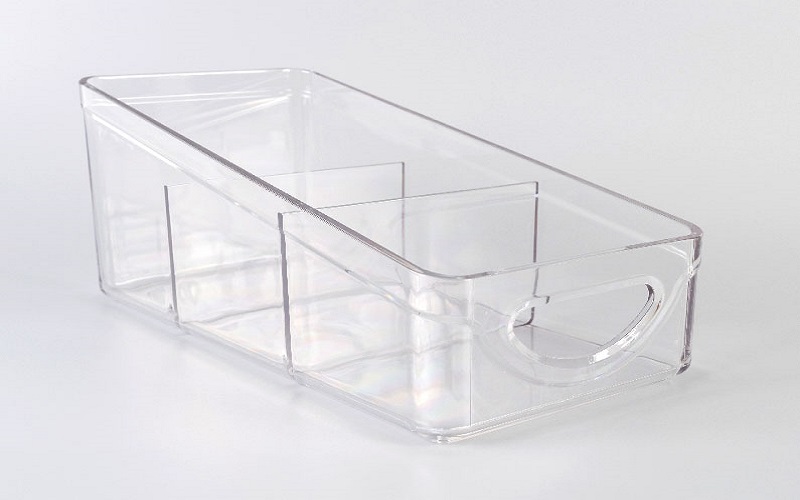
What Is PETG?
PETG, synthesized from terephthalic acid (PTA), ethylene glycol (EG), and 1,4-cyclohexanedimethanol (CHDM) via ester exchange, is a transparent, amorphous copolyester.
It enhances PET by substituting some ethylene glycol with CHDM, offering lower crystallization temperature and improved processability and toughness over PET.
With its excellent transparency, chemical resistance, impact resistance, and ease of processing, PETG is widely utilized in construction, medical, and industrial fields, becoming a popular alternative to traditional materials like PVC and PC.
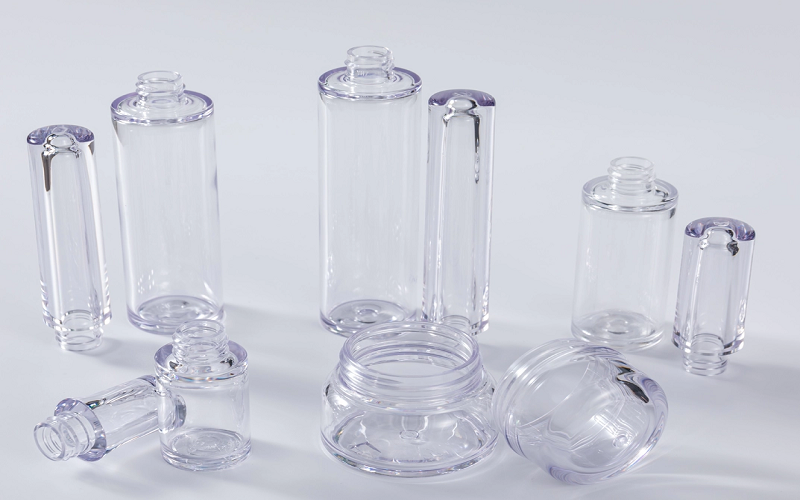
Polycarbonate vs PETG:Main Properties
The table below compares the main properties of polycarbonate and PETG:
Properties | PC | PETG |
Density(g/cm³) | 1.18 | 1.27 |
Melting Point(℃) | 220-230 | 180-230 |
Heat Deflection Temperature (℃) | 135, Low Temp 45 | 70-75 |
Tensile Strength, Yield (MPa) | 65-70 | 50-53.1 |
Impact Strength (J/m) | >600 | 101 |
Flexural Modulus (MPa) | 2400 | 2060-2160 |
Shrinkage Rate (%) | 0.4-0.6 | 0.35-0.5 |
From the data in the table, it’s evident that PC possesses unparalleled high impact strength and heat resistance, making it highly suitable for applications that demand extreme strength and temperature tolerance.
On the other hand, PETG, with its lower melting point and excellent processing capabilities, performs better in scenarios requiring complex PETG injection molding or 3D printing.
Additionally, under less demanding environmental conditions, such as packaging and some non-load-bearing structural components, PETG emerges as a preferred material.
Polycarbonate vs PETG:Applications And Uses
For many injection molding companies, PC and PETG are commonly used injection molding materials that can meet the complex needs of various industries.
Polycarbonate molding/extrusion molding products are primarily used in the following industries:
1.Automotive industry: lighting systems, dashboards
2.Optical lenses: eyeglasses and cameras, typewriter lenses
3.Medical devices: surgical face masks, disposable dental instruments, blood separators
4.Electronics industry: housings and components for power tools
5.Mechanical parts: gears, bearings
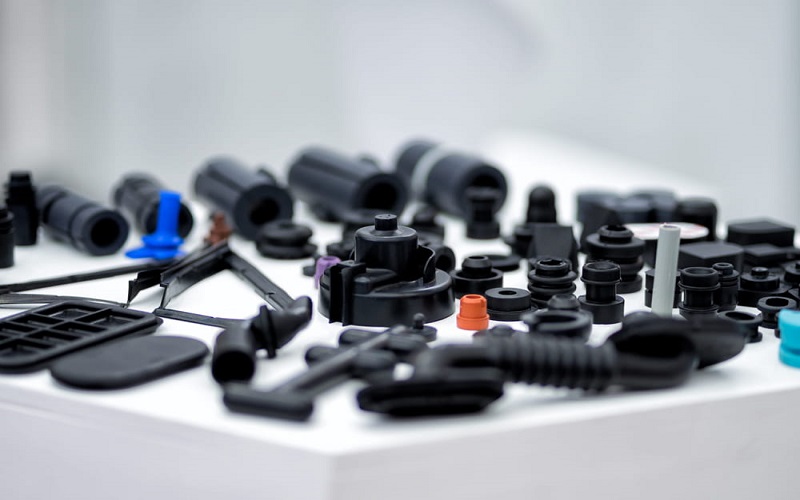
The main markets for PETG products differ slightly from PC, for example:
1.Cosmetic packaging: perfume bottles, lipstick tubes, makeup cases
2.Sheet materials: building panels, credit card and ID card materials
3.Medical industry: pharmaceutical bottles, IV sets, blood bags
4.3D printing: decorative items and art models
5.Food packaging: water cups, salt containers
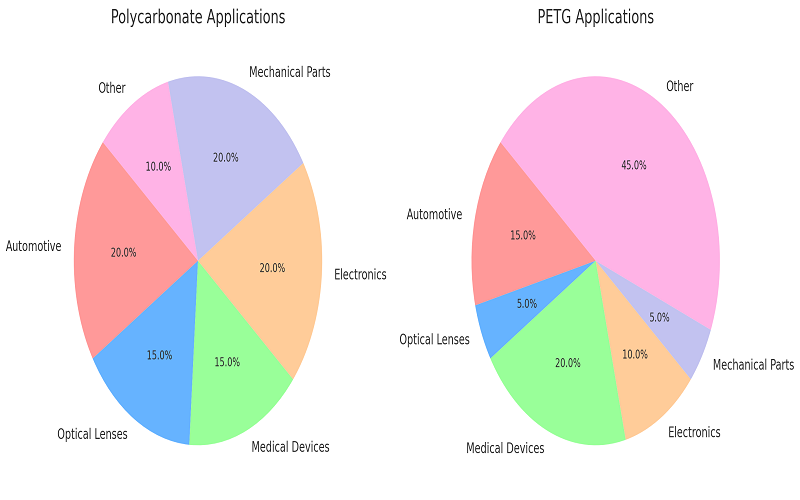
Polycarbonate And PETG in 3D Printing
Compared to other plastics used in 3D printing, Polycarbonate filament boasts high strength, heat resistance, and impact resistance, making it suitable for final parts used in demanding engineering applications.
However, 3d printed polycarbonate requires high temperatures during printing, necessitating a heated bed and an enclosed printing environment to prevent warping and cracking, which makes the printing process relatively challenging.
It’s well known that PETG is a 3D printing material that stands alongside PLA and ABS.
When PETG vs ABS, is more corrosion-resistant and has simpler printing requirements.
It also offers greater toughness and durability than PLA. During the printing process, PETG exhibits excellent layer adhesion, reducing the occurrence of layer separation and producing parts with smooth appearances and robust structures.
Compared to PC, PETG’s printing conditions are less stringent. It does not require an enclosed printing environment, and the temperature requirements for the print bed are lower, making PETG more accessible to a wide range of 3D printing enthusiasts and professionals.
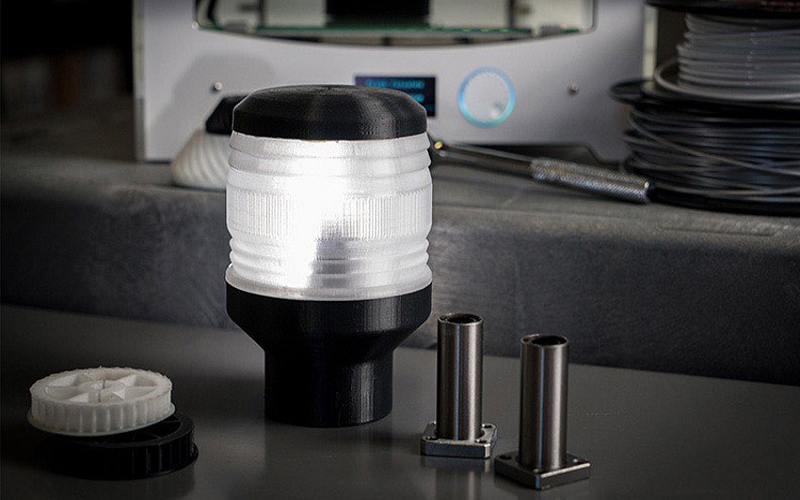
Polycarbonate vs PETG:Safety Assessment
When selecting plastic materials, safety performance is an essential criterion we must consider.
As the application range of Polycarbonate and PETG continues to expand, both consumers and plastic manufacturers are paying more attention to the safety of these two materials.
The excellent flame retardancy of PC is one of its significant advantages, possessing UL94 V-2 level flame retardancy without the need for additives, which can enhance the product’s fire safety performance.
However, in answering the question, “Is polycarbonate safe?” we must consider several other aspects.
For instance, the presence of Bisphenol A in PC under certain conditions has raised some health and safety concerns.
At the same time, PETG, as a BPA-free material known for its good chemical stability and biocompatibility, is becoming the preferred material in the medical industry.
More importantly, PETG is an environmentally friendly material that not only meets the requirements for food contact management but is also non-toxic to both humans and the natural environment.
During the thermal processing, PETG does not produce unpleasant odors, and it does not release toxic gases during incineration, thus, PETG is widely recognized as a safe food-grade plastic.
Therefore, in response to the question “Is PETG safe?” we can definitively answer yes, PETG is a safe and environmentally friendly material choice.
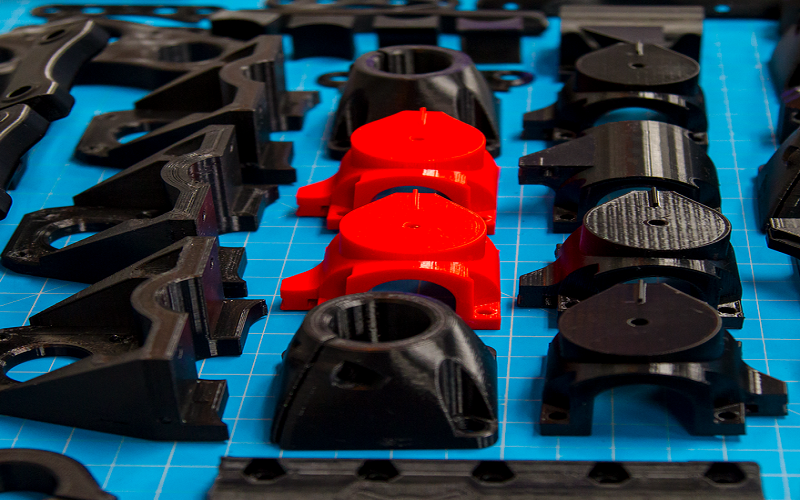
Polycarbonate vs PETG:Environment and Recycling
As the concept of sustainable development deepens, the recycling and processing of plastic products have become an important part of manufacturing tasks.
Therefore, the environmental characteristics and recycling capabilities of Polycarbonate and PETG have received widespread attention.
Theoretically, all applications of polycarbonate plastic are 100% recyclable and are identified by the plastic recycling number “7”.
However, the chemical structure of PC and the various additives it may contain (such as flame retardants, UV stabilizers, and colorants) necessitate more complex sorting and processing during recycling.
Particularly, the presence of BPA requires special handling to avoid environmental and health risks, which to some extent increases the difficulty of recycling.
On the other hand, PETG, which is marked with the plastic identification code “1” just like PET plastic, can be recycled through the existing PET recycling systems.
Its chemical and physical properties allow it to maintain good stability during the recycling process, thus it can be effectively reused.
This characteristic of PETG gives it certain advantages in terms of environmental protection, especially in the packaging industry where the usage and recycling rates of PETG are continuously increasing.
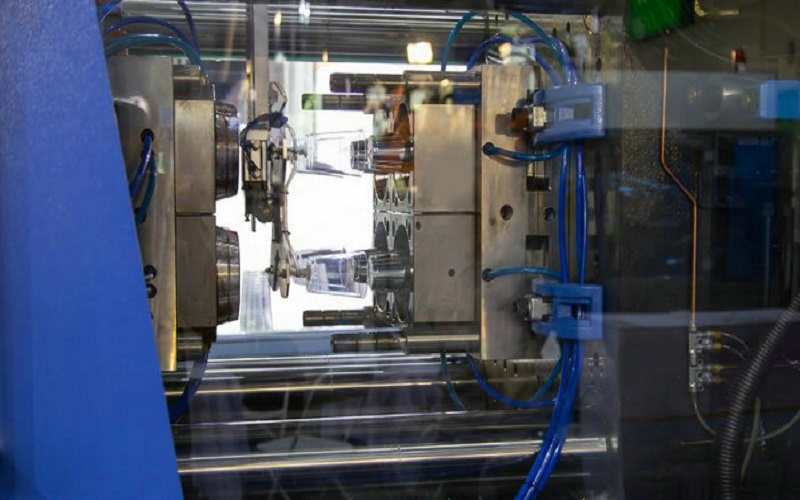
How To Choose Between Polycarbonate And PETG?
In summary, if your application demands high strength, impact resistance, and temperature tolerance, Polycarbonate is likely the better choice.
On the other hand, if you need good chemical resistance, flexibility, and a more environmentally friendly option, PETG might be the way to go.
Always consider the specific needs of your project, including safety standards, cost, and environmental impact, before making your final decision.
